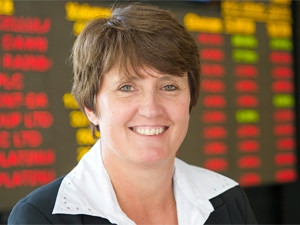
The Johannesburg Stock Exchange (JSE) has launched an online trading simulator and is moving ahead with the construction of its co-location centre, which will boost trading speeds.
In a statement, the bourse says the virtual platform is a bid to grow public participation on the JSE. The online trading simulator will allow aspirant traders to test a range of JSE products, in a risk-free environment, it says.
This simulated trading platform, dubbed the JSE Virtual Trader, is hosted on the JSE's Web site. Registered users are able to trade any of the JSE's suite of products, on a real-time basis, using virtual currency. Although the price feed is 15 minutes delayed, the bourse says "members of the public can now experience the world of trading through investing, hedging and speculating".
Traders can test investment strategies and track a virtual portfolio created from any the JSE asset classes, the JSE says. It notes that users can see how various products on the exchange are priced, traded, risk-managed and settled on a daily basis, all within a risk-free environment.
"The JSE Virtual Trader is aimed at individuals who understand the basics of investing but who have not yet opened a trading account, and those who want to expand the product range that they use. For example, investors interested in derivatives can practise their trading strategies here before committing any capital," says Anthony Leibrandt, manager of bonds and financial derivatives at the JSE.
Getting faster
In addition to the platform, the JSE is moving ahead with the construction of its co-location tier three centre, which should be completed in the first half of 2014.
Co-location allows trading firms to place their computer servers near an exchange's matching engine to trim the time it takes for messages to be sent to and from the trading engine. This shaves microseconds off trading times and reduces bandwidth requirements.
"Clients demand faster execution speeds, and exchanges need to offer these in order to compete. Co-location potentially offers huge benefits for our market in terms of volumes and liquidity, which in turn could lead to better price discovery. Our latency compares very favourably with international latencies offered by other exchanges," says Leanne Parsons, director of the JSE's Equity Market.
The JSE says co-location will offer clients the fastest execution speeds as well as fastest access to data - speeds will increase execution probability and allow for quick responses to market movements.
Trading on the JSE since Millennium Exchange implementation:
* About 65% of the JSE's trading activity can be attributed to algorithmic trading activity.
* The first year saw the JSE receive almost 1.5 billion orders.
* The highest number of orders on one day was 9.3 million on 20 June 2013.
* A peak of 1 941 orders per second.
* A peak of almost 1 000 trades per second.
* Almost 140 000 average daily trades which compares to 158 000 trades per month in the first year of the JSE's first electronic trading system (implemented in 1996).
* 2.5 billion market data messages disseminated.
* 35 million trades.
Co-location will offer 24 times faster access into the equity market with a latency of 100 microseconds compared to 2 400 microseconds, the current fastest latency of JSE members located in Sandton.
"To put this speed into perspective, there are one million microseconds in a second and one thousand microseconds in a millisecond," says the JSE.
New income sources
The JSE says faster speeds will be made possible by the Millennium IT software, ultralow latency network equipment, and a robust yet simple network design supporting low latency.
The co-location move follows a licensing agreement with technology solutions provider Millennium IT, allowing the JSE to move its equity market trading activity onto Millennium Exchange, which it wrapped up last July. The platform is housed within the JSE's recently completed new state of the art data centre based on tier three specifications and is designed to ensure 99.98% availability.
Demand for co-location has come from its members, as well as clients, software providers and data vendors, both local and international, with most demand coming from the UK, says the JSE. Co-location also opens up new revenue streams for the JSE.
The co-location facility will initially provide space, power, cooling, and physical security for 35 racks for clients' computers. The racks will be placed in a hot and cold aisle layout, a design which is proven to conserve energy and lower cooling costs by managing air flow.
The room is configured so that all clients experience the same speeds, says the JSE. It will make use of an internationally recognised vendor to monitor latency and clients will also have access to a centralised portal to view latency updates.
Other benefits to members include reduced bandwidth costs and less reliance on network service providers. Co-location will provide client access to all JSE markets. Pricing of co-location offerings will be the same for all client types.
Share